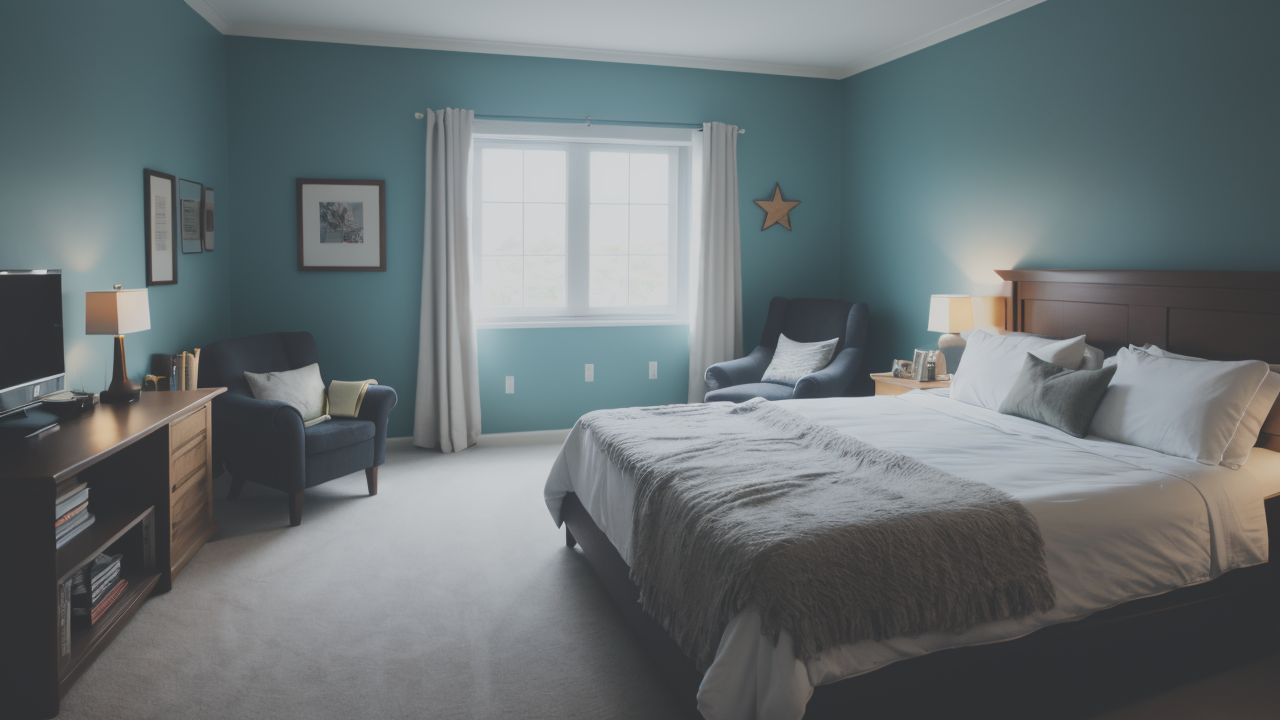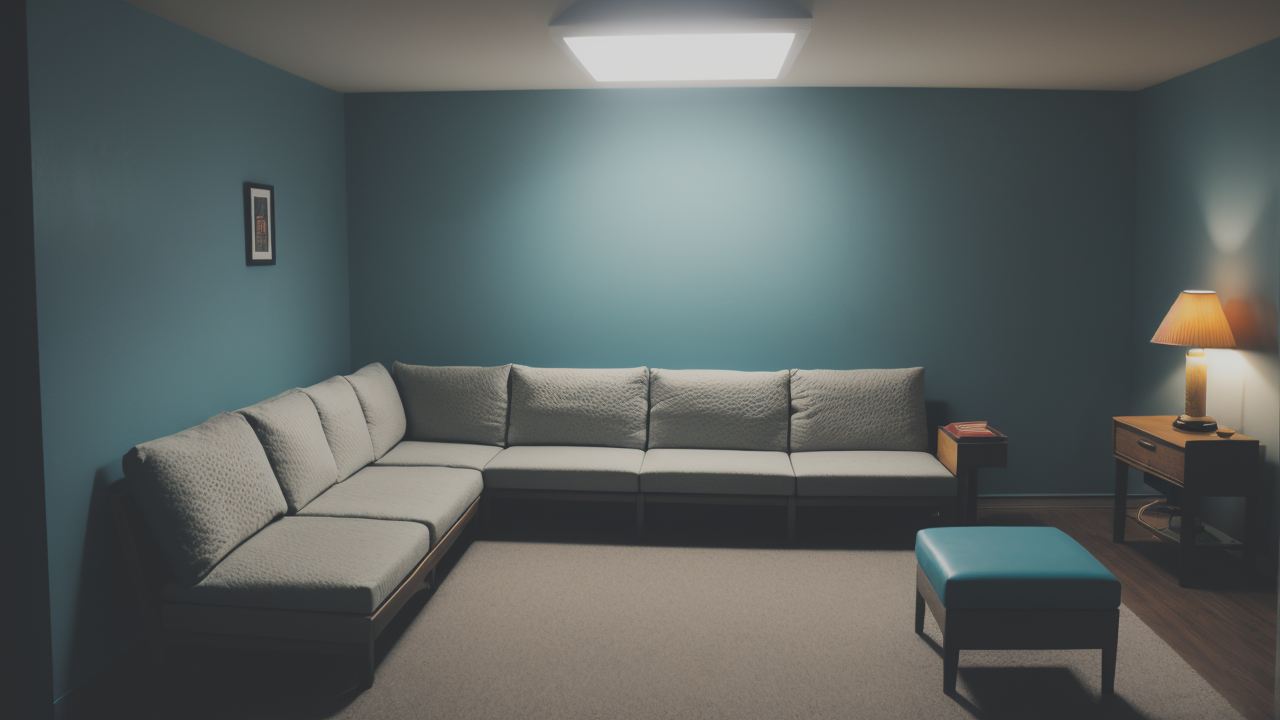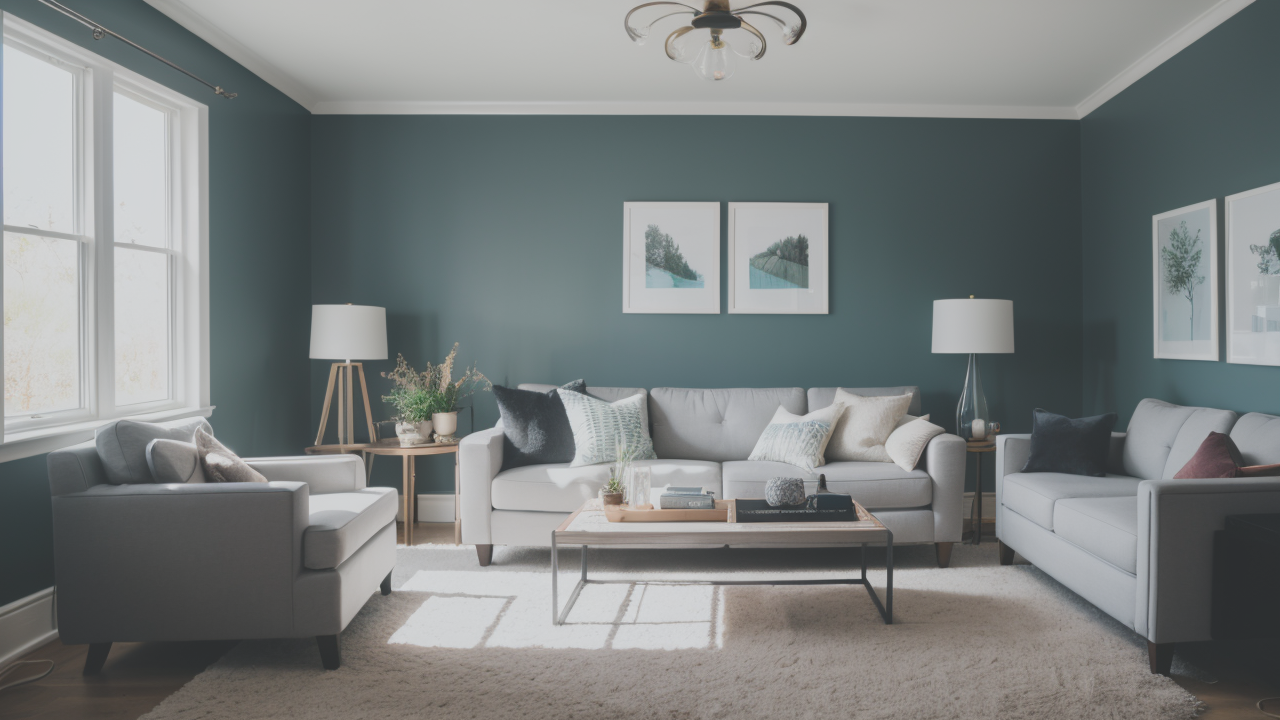
Exploring the Impact of Color Psychology in American Interior Design
Understanding the Role of Colorful Paintings in Interior Design
The Psychology of Color in Home Decor
Colors have a powerful impact on our emotions and behavior. They can change how we feel in a space. Different colors evoke various moods and reactions. For example, blue often creates a sense of calm and peace. It's great for bedrooms or bathrooms. Red, on the other hand, can energize a space. It works well in dining rooms or exercise areas.

Yellow brings cheerfulness and warmth. It's perfect for kitchens or living rooms. Green connects us to nature and promotes balance. It's suitable for any room needing a fresh feel. Purple adds luxury and creativity. It's ideal for accent walls or artistic spaces.
Understanding color psychology helps create the right atmosphere in each room. It's not just about what looks good. The colors you choose can affect how you feel and function in your home. Consider the purpose of each room when picking colors. This way, you can design a space that looks good and feels right.
Selecting the Right Palette for Your Living Space
Choosing colors for your home involves more than picking your favorites. Here are key factors to consider:
- Room size and natural light
- Existing furniture and decor
- The mood you want to create
- Color wheel relationships
Start with a base color. Then add accent colors. Use the 60-30-10 rule as a guide. 60% should be your main color. 30% your secondary color. And 10% your accent color.
Don't forget about neutrals. They can balance bold colors and create a cohesive look. White, beige, and gray are versatile options. They can make a space feel larger and brighter.
Test paint samples on your walls before deciding. Colors can look different based on lighting and time of day. Also, think about the flow between rooms. Each room can have its own style. But there should be harmony throughout your home.
Lastly, trust your instincts. Your home should reflect your personality and make you feel comfortable.
Case Studies: Successful Colorful Painting Schemes
Let's look at some real-life examples of successful colorful painting schemes:
- The Energetic Kitchen: A homeowner used bright yellow for their kitchen walls. They paired it with white cabinets and steel appliances. The result was a cheerful space that felt welcoming and lively.
- The Calming Bedroom: Soft blue walls created a peaceful atmosphere in this bedroom. Light gray accents and white bedding completed the serene look. The owners reported better sleep and relaxation.
- The Productive Home Office: A deep green accent wall added focus to a home office. The other walls were kept neutral. This color scheme boosted concentration and creativity for the homeowner.
- The Cozy Living Room: Warm terracotta walls made this living room a cozy retreat. Natural wood tones and earth-colored furnishings created a welcoming atmosphere for family gatherings.
These examples show how thoughtful color choices can transform a space's feel and function. They prove that bold colors, when used wisely, can create stunning and practical living spaces.
Maximizing the Impact of Colorful Paintings with Strategic Seating
Arranging Furniture to Enhance Visual Effects
Furniture placement can greatly enhance the impact of colorful walls. Here are some tips:

- Create a focal point: Use your colorful wall as a backdrop for key furniture pieces.
- Balance with neutrals: Pair bold wall colors with neutral furniture to avoid overwhelming the space.
- Use contrast: Light furniture against dark walls (or vice versa) can create striking visual interest.
- Consider scale: Make sure your furniture doesn't overpower or get lost against colorful walls.
- Define zones: Use rugs and furniture groupings to create distinct areas within a colorful room.
Remember, the goal is to create a cohesive look. It should showcase both your colorful walls and your furniture. Don't be afraid to experiment with different layouts. Move things around until you find what works best for your space.
Also, think about the room's function when arranging furniture. In a living room, create conversation areas. In a bedroom, focus on relaxation and comfort. Let the colorful walls guide you, but don't let them control the entire layout.
The Intersection of Art and Comfort: Seating in the Presence of Colorful Art
When combining colorful walls with seating, balance is key. Your seating should complement, not compete with, your vibrant walls. Here are some strategies:
- Choose complementary colors: Select seating fabrics that enhance your wall colors.
- Use neutral seating: Let your walls be the star by choosing subdued furniture colors.
- Add colorful accents: Use pillows or throws to echo wall colors in your seating arrangement.
- Play with textures: Mix smooth and textured fabrics to add depth to your color scheme.
- Consider sight lines: Ensure seating doesn't block views of your colorful walls or artwork.
Remember, comfort is just as important as style. Choose seating that not only looks good but feels good too. Soft, inviting furniture can make even the boldest color schemes feel welcoming and livable.
Don't be afraid to mix and match styles. A modern sofa can look great against a traditionally painted wall. The key is to find pieces that tie the look together, like coordinating throw pillows or a rug.
Choosing the Right Materials and Textures for Your Seating
The materials and textures you choose for your seating can greatly impact your colorful room. Here are some options to consider:
- Leather: Adds sophistication and is easy to clean. Works well with both bold and muted wall colors.
- Velvet: Brings luxury and depth. Its sheen can beautifully reflect colorful surroundings.
- Linen: Offers a casual, relaxed feel. Its neutral tone can balance vibrant wall colors.
- Microfiber: Durable and soft, it comes in many colors to complement or contrast with walls.
- Patterned fabrics: Can tie together multiple colors in a room's palette.
When choosing, think about durability and maintenance as well as aesthetics. A white linen sofa might look great, but it may not be practical for a family with young children or pets.
Also, consider how the texture interacts with your wall colors. Smooth fabrics can create interesting contrasts with textured walls. Conversely, textured fabrics can add depth to smooth, colorful walls.
Tips for Incorporating Colorful Paintings in the United States Market
Navigating Regional Color Trends in the U.S.
Color preferences can vary across different regions of the United States. Here's a general guide:

- Northeast: Favors traditional colors like navy, forest green, and warm neutrals.
- Southeast: Embraces bright, tropical hues reflecting the coastal influence.
- Midwest: Tends towards earthy tones and warm, comforting colors.
- Southwest: Inspired by desert landscapes with terracotta, turquoise, and golden hues.
- West Coast: Leans towards cool, calming colors like blues and greens.
Remember, these are general trends. Individual preferences always vary. Use these insights as a starting point, not a strict rule. When in doubt, neutral colors have universal appeal and can be accented with regional favorites.
Also, consider urban vs. rural settings. Urban areas often embrace bolder, more modern color schemes. Rural areas may lean towards more traditional or nature-inspired palettes.
How to Adapt Colorful Paintings to Various Home Styles
Colorful walls can work in any home style with the right approach. Here are some tips:
- Traditional homes: Use rich, classic colors like deep reds or forest greens.
- Modern spaces: Opt for bold, primary colors or stark contrasts like black and white.
- Farmhouse style: Incorporate muted, earthy tones like sage green or warm yellow.
- Coastal homes: Choose soft blues, greens, and sandy neutrals.
- Industrial lofts: Experiment with unexpected pops of bright color against neutral backgrounds.
Remember to consider the existing elements in your home. Colors should complement, not clash with, your overall design aesthetic. In a traditional home, you might use bold colors in smaller doses. In a modern home, you could be more adventurous with large color blocks.
Don't forget about trim and ceiling colors. They can greatly impact how wall colors are perceived.
Expert Insights on Colorful Painting and Seating Combos for Sale
When selling homes with colorful painting and seating combinations, experts suggest:
- Stage strategically: Use furniture to highlight, not hide, colorful walls.
- Create balance: Pair bold walls with neutral seating, or vice versa.
- Tell a color story: Ensure colors flow logically from room to room.
- Use lighting: Proper illumination can enhance the impact of colorful walls.
- Offer versatility: Show how colorful spaces can adapt to different styles.
Remember, while bold colors can be a selling point, they might not appeal to everyone. Be prepared to discuss how easily walls can be repainted if necessary. Staging with versatile, neutral furniture can help potential buyers envision their own style in the space.
Consider creating a "look book" showcasing different furniture arrangements and color schemes. This can help buyers see the potential in colorful spaces. Ultimately, the goal is to showcase the home's unique character while allowing buyers to imagine making it their own.


